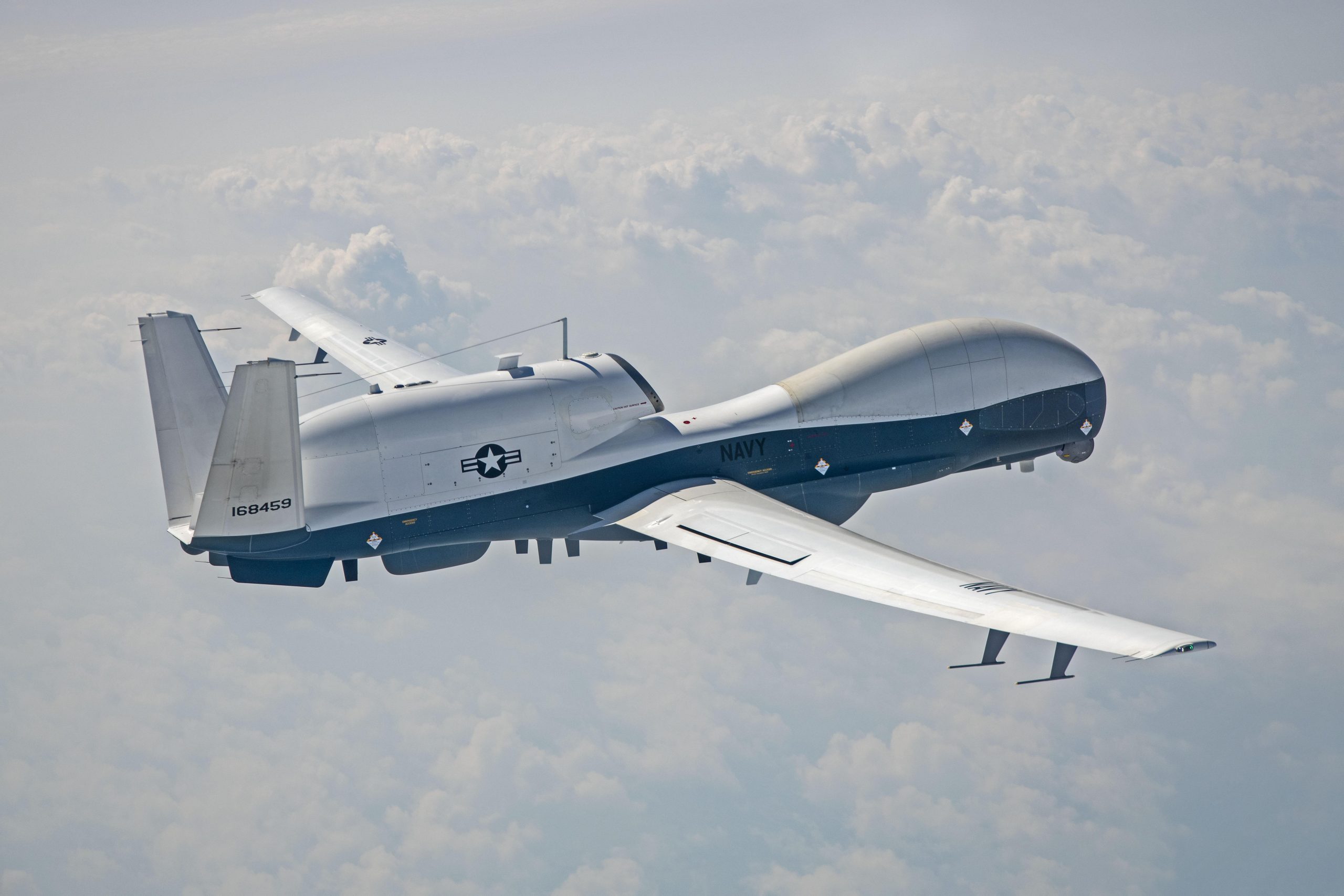According to a press release published on July 29, 2021 from NAVAIR, the U.S. Navy has conducted first MQ-4C Triton test flight with multi-intelligence upgrade.
The Navy conducted its first test flight of the MQ-4C Triton in its upgraded hardware and software configuration July 29 at NAS Patuxent River, beginning the next phase of the unmanned aircraft’s development.
The MQ-4C Triton flew in its new configuration, known as Integrated Functional Capability (IFC)-4, which will bring an enhanced multi-mission sensor capability as part of the Navy’s Maritime Intelligence, Surveillance, Reconnaissance and Targeting (MISR&T) transition plan.
Triton’s Integrated Test Team (ITT) comprised of the U.S. Navy, Australian cooperative partners, and government/industry teams completed a functional check flight and initial aeromechanical test points, demonstrating stability and control of the MQ-4C after a 30-month modification period.
“Today’s flight is a significant milestone for the program and a testament to the resolve of the entire ITT, their hard work, and passion for test execution and program success,” said Capt. Dan Mackin, Persistent Maritime Unmanned Aircraft Systems program manager. “This flight proves that the program is making significant progress toward Triton’s advanced multi-intelligence upgrade and it brings us closer to achieving the initial operational capability (IOC) milestone.”
Multiple Triton assets have been modified into the IFC-4 configuration in support of IOC in 2023. A single test asset is in the current IFC-3 configuration to support sustainment of deployed systems as well as risk reduction for IFC-4.
Currently, two MQ-4C Triton aircraft in the baseline configuration known as IFC-3 are forward deployed to 7th Fleet in support of early operational capability (EOC) and Commander Task Force (CTF)-72 tasking. VUP-19 will operate Triton to further develop the concept of operations and fleet learning associated with operating a high-altitude, long-endurance system in the maritime domain.
“The MQ-4C Triton has already had a tremendous positive impact on operations in USINDOPACOM and will continue to provide unprecedented maritime intelligence, surveillance and reconnaissance capabilities which are especially critical to national interests with the increased focus in the Pacific,” Mackin said.
Triton is the first high altitude, long endurance aircraft that can conduct persistent Intelligence, Surveillance and Reconnaissance (ISR) missions to complement the P-8 in the maritime domain. The Navy plans to deploy Triton to five orbits worldwide.
Featured Photo: An MQ-4C Triton flew its first test flight in its new hardware and software configuration July 29 at NAS Patuxent River, Md. The new configuration will bring an enhanced multi-mission sensor capability as part of the Navy’s Maritime Intelligence, Surveillance, Reconnaissance and Targeting (MISR&T) transition plan. (U.S. Navy photo)


